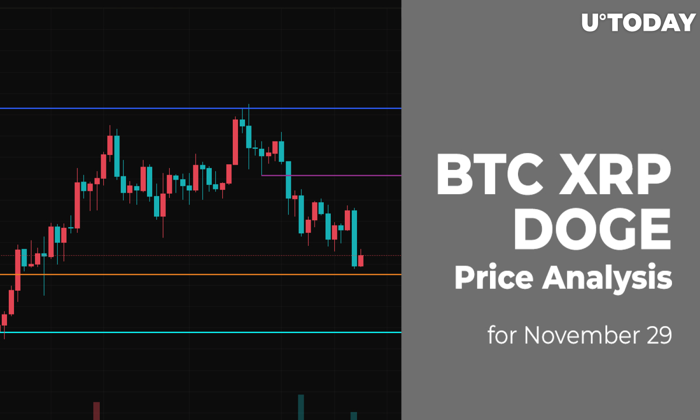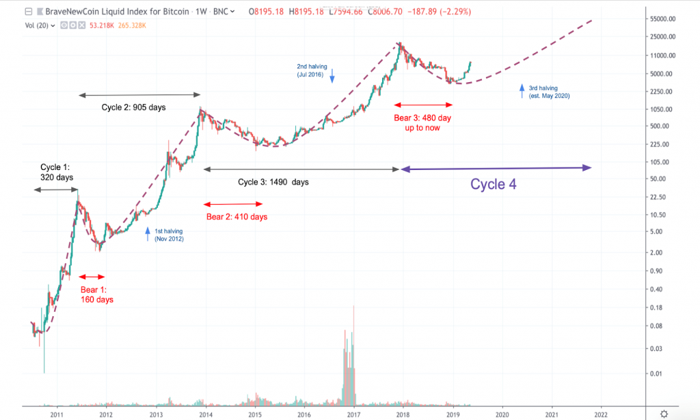In the wake of Moody’s downgrading the U.S. credit rating, an immediate ripple effect can be observed in the cryptocurrency market, prompting a focused XRP DOGE price analysis. Recent price movements indicate a notable dip, with both XRP and Dogecoin experiencing decreases of approximately 3%. This downturn underscores a broader trend influenced by the current economic climate, shaped by heightened concerns over government debt and macroeconomic stability. As such, the implications of the U.S. credit rating downgrade resonate throughout the digital asset landscape, influencing investor sentiment and market behavior. Analysts are closely monitoring these dynamics, assessing how these factors might shape future cryptocurrency market trends, particularly for XRP and DOGE.
Amidst recent fluctuations in digital currencies, the XRP and Dogecoin price dynamics have come under scrutiny. Following a pivotal rating revision by Moody’s, which reduced the U.S. credit standing, these cryptocurrencies reacted swiftly, reflecting broader market vulnerabilities. The recent DOGE analysis reveals a significant reaction to macroeconomic uncertainties, while XRP price movements are also a focal point as traders assess the implications of such rating downgrades. As the cryptocurrency segment reacts to external pressures from traditional finance, understanding these correlations becomes essential for investors. The evolving landscape demands that traders stay informed about potential risks and opportunities arising from shifts in the economic backdrop.
XRP DOGE Price Analysis Amid U.S. Credit Downgrades
The recent downgrade of the U.S. credit rating by Moody’s has profoundly impacted cryptocurrencies, particularly XRP and Dogecoin (DOGE). Following the announcement, both cryptocurrencies experienced a downturn of approximately 3%, reflecting investor anxiety over the macroeconomic implications. The downgrade, moving the U.S. from a perfect AAA rating to Aa1, signals rising concerns about fiscal stability, which directly influences market sentiment towards risk assets including cryptocurrencies. XPR’s price fell to $2.3843 while DOGE slid to $0.2171, revealing a direct response to the tightening market conditions.
In the wake of this credit downgrade, the XRP DOGE price analysis shows a heightened sensitivity to external economic factors among crypto traders. Traditionally, a downgrade of such magnitude would increase the appeal of alternative assets like cryptocurrencies as a hedge against inflation and economic instability. However, the immediate reaction saw a flight to safety among investors, resulting in significant sell-offs across the board. The crypto market’s broader framework remains stuck at a market cap of $3.3 trillion, trying to navigate through these turbulent waters as market participants reassess their positions.
Implications of Moody’s Downgrade on Cryptocurrency Market Trends
Moody’s decision to downgrade the U.S. credit rating has introduced a shaking force into the cryptocurrency market. As traditional markets respond to this downgrade, so too do cryptocurrencies exhibit correlation with macroeconomic sentiments. Investors are wary as rising fiscal deficits and increased interest expenses fuel concerns surrounding government debt sustainability. The risk-off approach adopted suggests that cryptocurrencies are not immune to traditional economic trends, as shown by XRP and DOGE’s notable declines. Understanding these intertwined dynamics allows traders to better navigate the crypto landscape during times of fiscal distress.
Moreover, the implications extend beyond just immediate price movements. Historically, downgrades such as these could lead to shifts in investor strategies across both traditional stocks and cryptocurrencies. Market participants might begin diversifying into decentralized assets, like BTC and ETH, to mitigate risk, as the threat of increased volatility and macroeconomic instability looms larger. The ongoing analysis of how XRP and DOGE reactions reflect broader cryptocurrency market trends reveals significant behavioral patterns among traders. These trends could dictate the future positioning and resilience of cryptocurrencies in an increasingly cautious investor environment.
Analyzing XRP and DOGE Responses to Economic Shifts
XRP and DOGE’s current market performance serves as a case study for cryptocurrency responses to economic shifts caused by decisions from credit rating agencies. Following the downgrade announcement, XRP’s drop to $2.3843 and DOGE’s fall to $0.2171 signals that investor confidence is fragile, heavily influenced by macroeconomic narratives. Observers noted that traditional safe havens like gold and Bitcoin often gain traction in such scenarios, yet in the immediate fallout, speculative assets like DOGE experienced significant selling pressure, exhibiting a flight to safety among traders who were worried about larger economic implications.
Furthermore, the volatility observed in XRP and DOGE highlights an essential aspect of the cryptocurrency sector: their susceptibility to global economic stimuli. Traders may need to ascertain when to enter the market or when to take profits in the face of such instability. Movement patterns in both XRP and DOGE show that investor behavior—whether it’s fear or optimism—can be significantly influenced by events such as the U.S. credit downgrade. This leads to critical insights into how cryptocurrencies can be effectively traded in response to fluctuations in the broader financial ecosystem, aligning with traditional economic principles.
Market Impact of Credit Downgrade on Cryptocurrency Values
In light of the recent U.S. credit downgrade by Moody’s, the cryptocurrency market witnessed immediate impacts on values with several major assets including XRP and DOGE seeing notable declines. As the rating dropped to Aa1, traditional financial markets reacted negatively, leading to a cascading effect on digital currencies as investors reevaluated their holdings amidst increasing risk. This recessionary sentiment can serve as a case study for understanding the interconnections between crypto markets and macroeconomics.
Furthermore, the broader cryptocurrency market dynamics reveal that the implications of credit ratings extend beyond simplistic price drops. They set the stage for longer-term shifts in market perception and investor behavior. The reaction of cryptocurrencies like XRP and DOGE exemplifies their role as both speculative instruments and potential safe havens. As the market grapples with the aftermath of the downgrade, the lesson here revolves around the importance of adaptability and awareness of external economic signals which can trigger significant price movements in the volatile crypto spaces.
Short-term Bearish Trends in XRP and DOGE Prices
The fluctuation patterns exhibited by XRP and DOGE in the wake of the U.S. credit downgrade portrays a short-term bearish trend for these cryptocurrencies. As institutions and individual traders recalibrate their expectations, XRP’s decline reflects a reactionary trading behavior in uncertain times. Significant price movements have underscored the need for a strategic approach to entering or exiting the market amidst economic strains.
Moreover, analyzing these bearish trends provides essential insights into market psychology. The decline in prices for XRP and DOGE amidst macroeconomic concerns indicates that investor sentiment is currently swayed by external factors beyond the typical cryptocurrency speculation. Many market analysts suggest that while short-term volatility may persist, there’s potential for recovery as the market stabilizes – emphasizing that the long-term view remains optimistic for those able to weather the current downturn.
Understanding Investor Sentiment Post-Downgrade
Following Moody’s rating downgrade of the U.S. credit, understanding investor sentiment becomes critical for interpreting price changes in cryptocurrencies like XRP and DOGE. The downgrade has infused heightened levels of uncertainty, prompting many traders to shift to a more cautious stance, often leading to sell-offs in speculative assets. Current market trends suggest a pronounced risk-off mentality where investors are weighing the potential rewards of cryptocurrency against looming economic threats.
With XRP’s price dipping and DOGE following suit, market participants are analyzing not just technical indicators but also the effects of macro news on their trades. The downgrading, perceived as a signal of economic instability, influences the buying and selling activities across the crypto landscape, underlining the importance of tracking investor sentiment as an indicator of future cryptocurrency movements. Capturing this level of sentiment analysis enables traders to make informed decisions based on anticipated market behaviors rather than solely technical metrics.
Long-term Perspectives on XRP and DOGE
While the immediate effects of the U.S. credit downgrade may seem detrimental—stripping XRP and DOGE of value in the short term—long-term perspectives could reveal more nuanced outcomes. Historically, major events that trigger declines often set the stage for rebounds when market confidence is restored. Observers suggest that those investing in cryptocurrencies should consider their long-term benefits, including the structural changes and advancements in the sector.
Moreover, as cryptocurrencies increasingly integrate into global financial systems, their valuations may stabilize and eventually prosper following periods of adversity. Investors studying XRP and DOGE must contextualize current price movements within broader trends that encompass regulatory developments and adoption rates. This strategic long-term view can assist potential investors in identifying opportune moments to buy in as the dust settles from economic shifts.
Technical Analysis of XRP and DOGE
A closer technical analysis of XRP and DOGE can shed light on their performance amidst challenging economic parameters. After the downgrade, traders are scrutinizing key support and resistance levels, essential for predicting potential price rebounds or further declines. For XRP, watching its position around $2.38 helps the community assess whether selling pressure will resolve into stabilization or deeper drops, similar patterns defined in DOGE’s recent price trajectories.
Technical indicators alongside emotional and fundamental analysis provide a comprehensive approach to trading. As cryptocurrency traders navigate through this phase of volatility, maintaining an eye on oscillators and moving averages can serve as valuable guides. This technical scrutiny will help in understanding not just prices, but the evolving market sentiments that can drive XRP and DOGE towards recovery or prolong their bearish phases.
Future Projections for Ripple and Dogecoin
Looking forward, future projections for Ripple (XRP) and Dogecoin (DOGE) heavily depend on macroeconomic stability and investor sentiment recovery. The recent U.S. credit rating downgrade serves as a wake-up call, emphasizing the interconnectedness of traditional finance and the crypto realm. Analysts forecast that Ripple’s innovative use cases, particularly in cross-border payments, could attract renewed interest as economic conditions stabilize, while Dogecoin’s popularity remains driven by community engagement and potential utility enhancements.
Ultimately, while immediate reactions to credit downgrades tend to spiral downward, the future outlook for both XRP and DOGE holds promise as the market normalizes. Investor confidence typically rebounds, especially for strong projects within the decentralized finance space. Thus, keeping abreast of economic indicators and their correlation with crypto trends will be crucial for traders looking to capitalize on recovery phases in the months ahead.
Frequently Asked Questions
What is the impact of XRP DOGE price analysis after Moody’s downgrades U.S. credit?
The recent downgrade by Moody’s of the U.S. credit score from Aaa to Aa1 has negatively impacted XRP and DOGE prices, causing both cryptocurrencies to fall approximately 3%. This downgrade has triggered risk-off sentiment in the market, highlighting the interconnectedness of traditional and cryptocurrency markets, particularly during times of macroeconomic uncertainty.
How do XRP price movements correlate with U.S. credit rating implications?
XRP price movements are often influenced by broader market sentiments, including changes in U.S. credit ratings. After Moody’s downgrade, XRP’s price dipped, reflecting investor concerns about economic stability. Such factors typically drive market reactions where cryptocurrencies may decline alongside traditional assets due to heightened risk aversion.
What are the recent trends in cryptocurrency market trends related to XRP and DOGE?
Recent cryptocurrency market trends show XRP and DOGE experiencing significant fluctuations due to external events, such as Moody’s downgrade of the U.S. credit rating. Following this announcement, both cryptocurrencies witnessed declines as investors reassessed their risk exposure, indicating a short-term bearish sentiment in the market affecting both digital assets.
What should investors look for in DOGE analysis post-U.S. credit downgrade?
Investors should focus on technical indicators and market sentiment in DOGE analysis following the U.S. credit downgrade. Monitoring trading volumes, support and resistance levels, and overall market trends can provide insights into potential price recoveries or further declines, reflecting the continuing effects of macroeconomic news on the cryptocurrency’s performance.
How might XRP and DOGE trade in response to future U.S. credit rating changes?
Future changes in U.S. credit ratings can significantly influence XRP and DOGE trading patterns. A potential downgrade or upgrade may lead to increased volatility, impacting investor confidence. Traders should remain vigilant and adapt their strategies accordingly, using tools such as price charts and market news to navigate these shifts.
| Cryptocurrency | Current Price (USD) | Percentage Change (%) |
|---|---|---|
| BTC | $ 103,445.80 | 0.00 |
| ETH | $ 2,491.58 | -3.22 |
| USDT | $ 1.0002 | -0.01 |
| XRP | $ 2.3843 | -0.60 |
| DOGE | $ 0.2171 | -2.98 |
| ADA | $ 0.7772 | +0.50 |
| TRX | $ 0.2693 | -1.24 |
| LINK | $ 15.41 | -4.55 |
Summary
XRP DOGE price analysis reveals that both Ripple (XRP) and Dogecoin (DOGE) experienced declines of around 3% following Moody’s downgrade of the U.S. credit score. This downgrade has triggered a risk-off sentiment in the market impacting various cryptocurrencies and traditional assets. With XRP and DOGE prices falling, investors should remain vigilant in monitoring market trends as the ramifications of this credit rating adjustment unfold.
XRP DOGE price analysis reveals a notable downturn in both Ripple (XRP) and Dogecoin (DOGE), which fell approximately 3% amid unsettling news of Moody’s recent downgrade of the U.S. credit rating. This significant event has ignited discussions surrounding cryptocurrency market trends, as investors react to the implications for XRP price movements and DOGE analysis alike. As the broader market grapples with these changes, the downgrading of the U.S. credit rating to Aa1 from Aaa intertwines with rising concerns over government debt, spurring a wave of risk-off sentiment across various asset classes. This situation has compounded the downward pressure on both XRP and DOGE, leading to cautious evaluations by traders who are now analyzing potential price trajectories in an uncertain landscape. Understanding the impact of U.S. credit rating implications on cryptocurrency dynamics is crucial as traders navigate through this volatile environment, investigating how macroeconomic factors influence price movements.
In examining the recent performance of XRP and Dogecoin, it becomes essential to understand the broader context surrounding these digital assets. Ripple’s XRP and Dogecoin, often viewed as significant players within the cryptocurrency ecosystem, are currently under pressure following Moody’s downgrade of the U.S. sovereign rating. This situation has not only affected traditional markets but has also created ripples through the crypto sector, prompting traders to scrutinize the associated risks and opportunities. With fluctuating market dynamics, the analysis of XRP and DOGE prices is critical for investors looking to navigate these turbulent times effectively. By assessing how economic factors like U.S. creditworthiness impact these cryptocurrencies, stakeholders can make informed decisions in this challenging atmosphere.















